Category Archives for "Freebie Included!"

Do you want to help your students develop deep thinking skills? Then this blog post is for you. In it, I share 2 visual strategies for developing deep thinking skills.
Here’s the story of how I use “shallow, deep, profound” to help my students who struggled with creating deep and detailed analysis of the literature texts.
Real-talk time: my students really struggle with analysis. Any kind of analysis. Instead of analysis, my students tend to act as Google Translate. They take the language of our lit text and ‘Google Translate’ it into their own words. They think this is what I mean by analysis. Even when I model it. Or when we talk in detail about the connotations and implications in the language.
So for the last few months, I have been using the stages ‘shallow, deep, profound‘ to help them visualize moving their understanding to a more profound place. We walk through these steps to ensure their analytical is deep and detailed.

These 3 words “shallow, deep, profound” are the key. I have them printed, chopped up, laminated, and up on my wall. My students are so used to these terms now, that all I need to do is point to them and they get what I’m saying.
Here’s how I introduce and define the process for my classes:
Shallow – this is when you are just giving me a surface reading of the text. You are essentially re-wording the text into your own words or showing that you understand what it is about.
Deep – this is when you explore the deeper meaning suggested by the language, techniques, or structure. You read into the implied meaning behind the words. These are the connotations of the language.
Profound – this develops on your deep reading above (that’s the first step). You have explored already the connotations of the words used, now you consider how the author is shaping the readers’ thinking. How does it link to the themes in the text? How does it confirm or subvert accepted thinking?
If you like the idea of using “shallow, deep, profound” in your classroom – then all you need to do is click here to download a pdf with the colour and blackline versions of this file.
I think I must use these two words 100 times a day. My students are great at having ideas – but I have to push them to tell me why they decided on that particular idea, or to give me the evidence to justify it. This is where my “why” and “because” reminder cards come in!
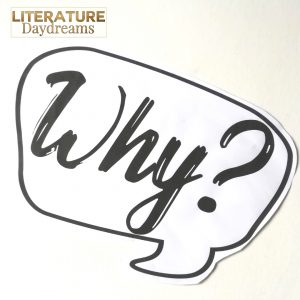
I have laminated these 2 words, enlarged to poster size, inside speech bubbles. I have them on my desk, ready to go! Sometimes I tack them to the wall, sometimes I wander around just holding them.
They are big and visible. Now I can just wave the laminates, point to them, even just nod in their direction, and my students know they have to develop their answers for me.
Why – why is important because you have to justify to me the reason you made that decision. What did the author do? Write a metaphor. Why? The word “why” in itself forces deeper thinking. What is the best idea we’ve had today? Why?
Because – teaching my students to use the word ‘because’ in their classroom dialogue and their analytical writing has been transformational. Just like moving from shallow to profound thinking – it forces them to move from the ‘what’ in a text to the ‘why’. It is the gateway to discussions concerning authorial intent, motivations, and purpose. The word ‘because’ nearly always follows a ‘why’ discussion, so it’s great to have on hand!
Again – if you like the idea of using these “why and because” prompts in your classroom, then all you need to do is click here to download the pdf file with them in.
If you love these teaching ideas – then sign up to receive two new ideas directly to your inbox every week!
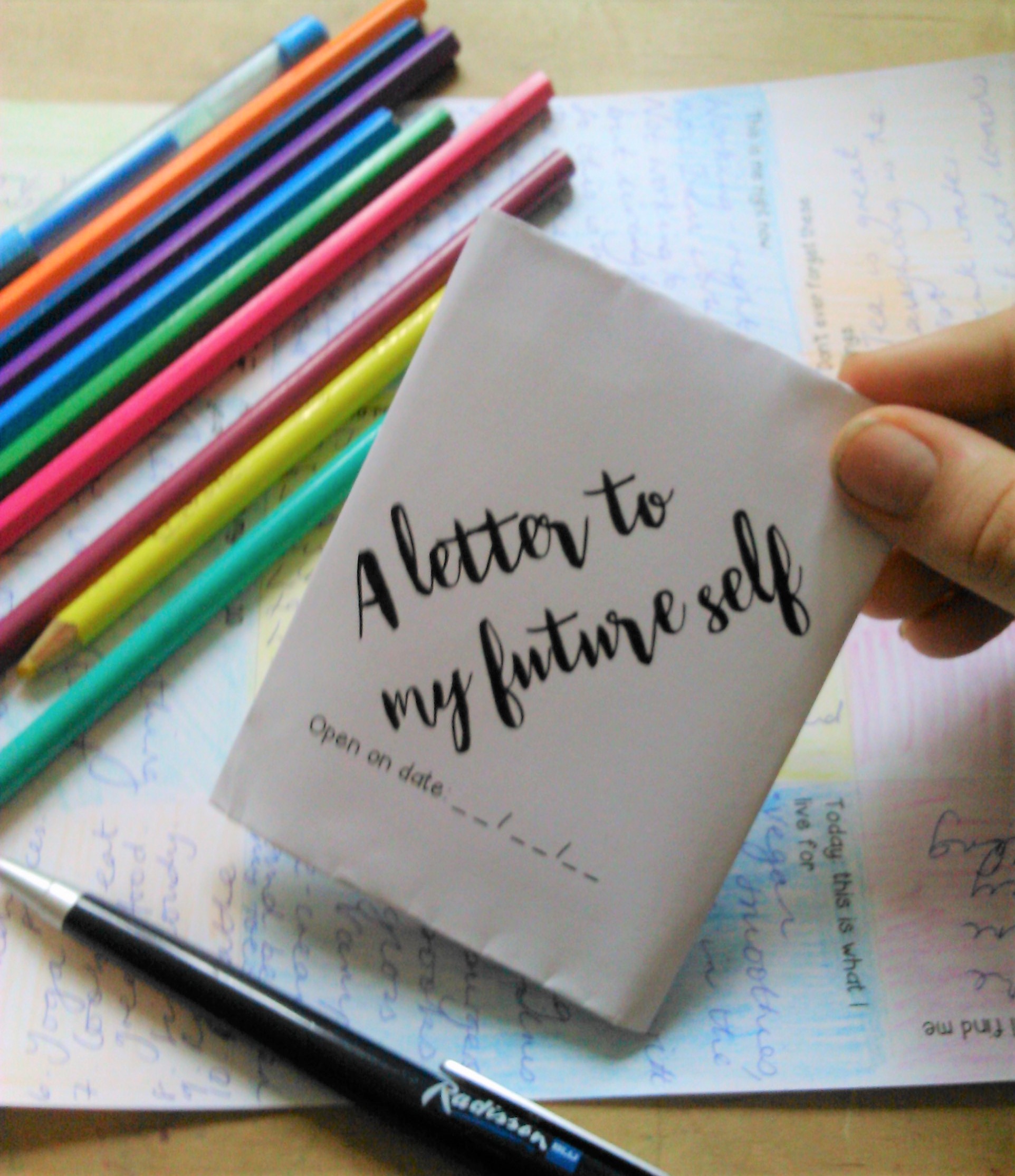
Sign up below to receive regular emails from me jammed packed with ELA teaching tips, tricks and free resources. Also access my free resource library!
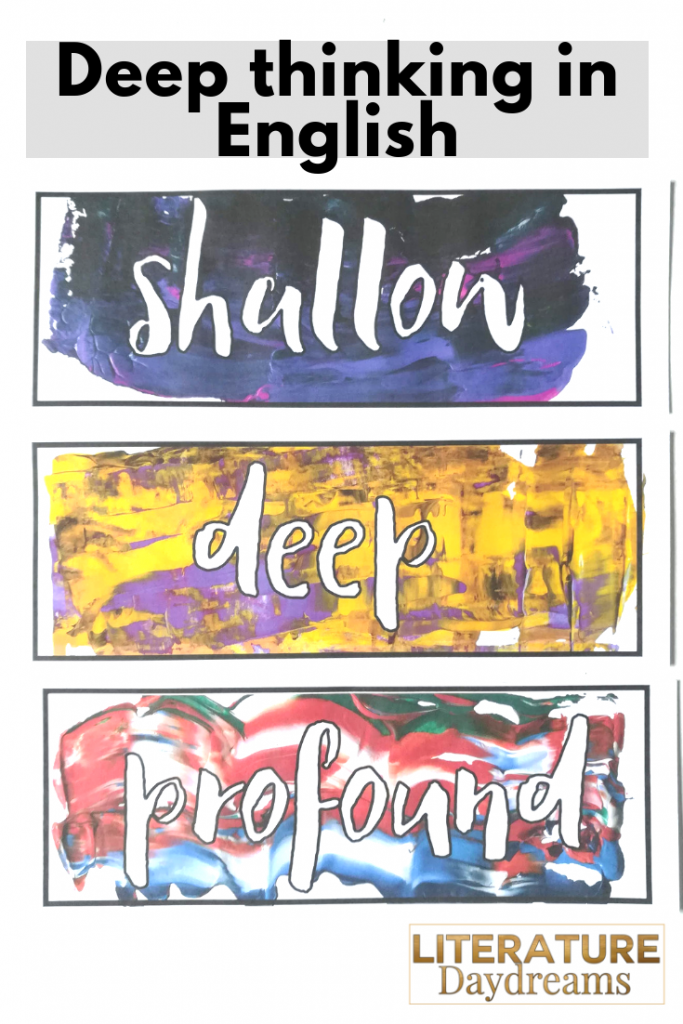
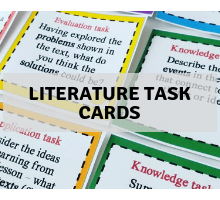 [print-me]
[print-me]
Reading literature is a huge part of English and ELA lesson time. Whether you are reading articles, short stories, or studying Shakespeare – it can be difficult often to find tasks that have the ability to engage and challenge students. I was finding that I was setting the same boring worksheets again and again. Fill out a table. Answer these quiz questions. While these are all fine. I wanted something more for my students. That is why I decided to create a set of task cards just for my literature texts.
Very simply these are a set of printable task cards with activities on that students can complete independently or in groups. All I had to do was print them once, in colour, and laminate them. Now I can take them out 4 – 5 times a week and use them with different classes.
The cards I created (and there is a free download here) are based on Blooms’ Taxonomy. There was no particular reason behind this, other than that I wanted to cover a range of skills. Some people treat Blooms’ like it is a hierarchy.
I didn’t want the task cards to be like that. Each of the tasks, I created 60 in total, are designed to get my students thinking. None is better than another.
Interested in downloading 10 tasks cards to try for free? Just click here!
If you love this activity – then sign up for my weekly “Making Sense on Sunday” email where I share two teaching ideas each week that you can use in your classroom straight away!

Sign up below to receive regular emails from me jammed packed with ELA teaching tips, tricks and free resources. Also access my free resource library!

It is an absolute pleasure that I have joined a group of a-m-a-z-i-n-g secondary bloggers to bring you the 12 Days of December Blog Hop and Giveaway! So grab a cuppa, snuggle up, and enjoy. Click here to find out more about the 12 Days of December Blog Hop.
So – here’s my seasonal serving of Christmas cheer!

Christmas is a timing of giving, right?! But it doesn’t have to be about spending money, sometimes a hand-made-with-love gift is worth more than anything store bought. So in my classroom (with my pretty cynical London teens) we make and give cards to teachers, support staff, dinner ladies, traffic wardens – in fact any adult in our school.
These FREE card templates are super cool, slick, and modern design. If your teens aren’t interested in Christmas cottages or cuddly Santas, then these FREE card templates are just for you and your students. There are 10 designs to download and print yourself >>>here<<<. Just print, give to your students, color and spread some Christmas joy!
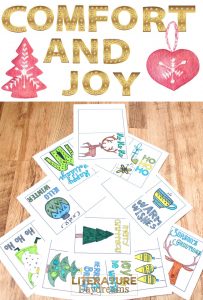 We color them for teachers in other subject areas to say thank you. We color them for support staff and dinner ladies, who are always there with a smile and a joke. We color them for our friends to remind them we care. We color them for family because nothing’s better than a homemade gift – right?! And finally we color them for the residents in our local area, we drop them through their letterboxes to wish them the best of year.
We color them for teachers in other subject areas to say thank you. We color them for support staff and dinner ladies, who are always there with a smile and a joke. We color them for our friends to remind them we care. We color them for family because nothing’s better than a homemade gift – right?! And finally we color them for the residents in our local area, we drop them through their letterboxes to wish them the best of year.
This year, for the first time we will color them for the elderly residents of a local care home. Many are alone, many will have no visitors at all over Christmas. This year, we hope to bring them joy.
If you love the idea of creating Christmas Cards with your students, then check out this hilarious Christmas Card poem writing lesson. Teach your class anaphora, anadiplosis, epistrophe, and other rhetorical devices to create some classic festive card poetry.
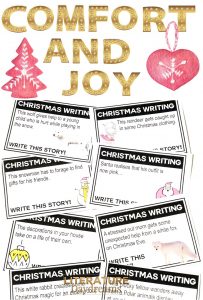 Christmas is a fantastic time of year for creative writing activities. Here are a few of my favorites!
Christmas is a fantastic time of year for creative writing activities. Here are a few of my favorites!
The UK department store, John Lewis, is famous in England for having wonderful, cosy, uplifting, heart-warming, and generally all-round wow Christmas TV advertisements.
These adverts make wonderful writing prompts. Just show the advert to your classes and give them the writing prompts below! Here are my favorites:
https://www.youtube.com/watch?time_continue=50&v=M0zZScVSMEwWriting prompt: describe someone struggling to wrap an awkward present.
Make sure you watch this one to the very end! Writing prompt: describe that ‘bed-time on Christmas Eve’ excitement.
https://www.youtube.com/watch?v=iccscUFY860
Writing Prompt: Write a narrative where a wild animal brings unexpected joy at Christmas!
If you enjoy these writing prompts, then you might also like my Christmas Fun Writing Prompt Bundle.
If you are looking for something a little different for your Literature classroom this Christmas then perhaps you could host an Elizabethan Christmas. If you teach Shakespeare at this time of year, then this question might have popped into your brain!
Well, in short – I would say – an Elizabethan Christmas was chaotic fun, social, and full of beauty. An easy way to introduce your students to this would be to pose the question: “what did everyone eat for Christmas dinner in 1588?” Let them guess. The answer is not surprising and surprising all at once. Goose. Goose wasn’t the usual meal for everyone at Christmas time in those days. But in the year 1588, by Royal decree, everyone in England was to eat goose. Why, I hear you ask? Because a goose was the first animal that Queen Elizabeth I saw after hearing that the Navy had defeated the invading Spanish Armada! (Thankfully it was a cat or a horse!)
This host an Elizabethan Christmas set contains hours and hours of fun. The centerpiece – or showstopper – is group work activity where each group brings a gift to your Christmas celebration. They research, and then make an object to represent six elements of Christmas for the Elizabethans. The Christmas Candle, the Yule Log, the Dawn Mass, the Feast and more.
Your students will work together, learn a great deal about an Elizabethan Christmas, they will have fun, and build community in your classroom. What better way to bring comfort and joy this Christmastide!
Don’t forget to find to check out what treats my secondary seller friends have in store for your this season. Click here to find all the details. A-n-d don’t forget to enter our Giveaway for a chance to win some amazing prizes!

*I send emails with teaching tips, tricks, and free resources to my subscribers regularly. I value your privacy and you can learn more about how I handle your data in our private policy. You can unsubscribe at any time.

I don’t know about you but I love Christmas. I love Christmas, like I love Shakespeare.
It’s a deep abiding love. The run-up to the holidays here in London is full of little traditions – today is Stir Up Sunday (which I have failed to do and so am behind already!), next week we have our Christmas Give Back collections at school, the Christmas concert, carol service, secret Santa. You name it, we do it.
And yet…every year the teens in my classroom moan and complain about everything Christmas (except the snacks). They love to hate it. They hate the music, they hate the decorations, the Christmas jumpers, buying presents, being nice. Scrooges and Grinches the lot of them. So each year I do 2 activities to combat these Scrooges of ELA.
No.1 color a card for someone at school and
No.2 write your own Christmas card poem.
These cards are super cool, the slick, modern designs appeal to our London teens. They aren’t interested in Christmas cottages or cuddly Santas. They want something modern, not traditional.

*I send emails with teaching tips, tricks, and free resources to my subscribers regularly. I value your privacy and you can learn more about how I handle your data in our private policy. You can unsubscribe at any time.
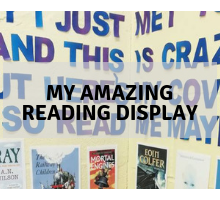
This gorgeous reading display is perhaps one of the best things I’ve added to my classroom in ages. And not just because I get to play Carly Ray Jepson songs in class… I cannot claim the idea is mine. But I do adore how it turned out! Here’s how I went about it and how you can swipe the download!
This week I updated the display in one pokey corner of my classroom. It’s one of those things that I had been meaning to do for a-g-e-s. But because the space was generally well hidden by the 5 tonnes of stuff I accumulated last year, it hadn’t been a high priority. Karma happens, though right? We had visitors in school and my classroom needed to be pristine. Or prestige, as my students would say!
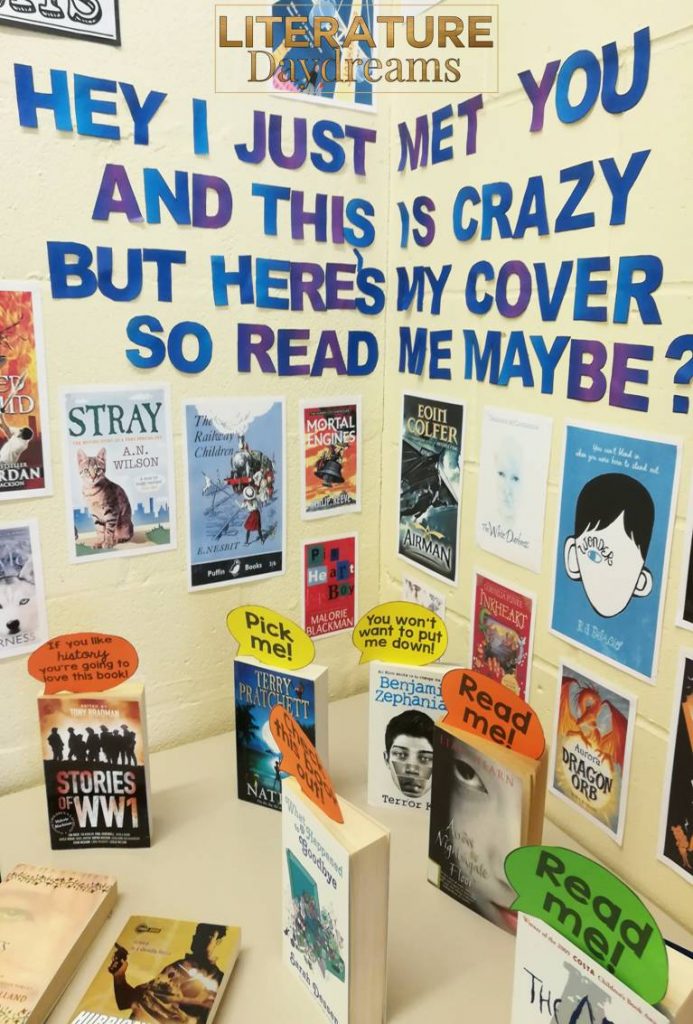
This cute rhyme is a play on Carly Ray Jepson’s song “Call Me Maybe”. All my students ‘got it‘ as soon as they saw the wall. They groaned and shook their heads, enjoying a moment of teenage indignation. I then asked them for their best book suggestions. So it’s their book recommendations, plus a few from my colleagues, that I placed around the rhyme! Read on to see how I made it and to swipe my files!
Before I get into the practical details – I wanted to give a shout out to the amazing Jessica Lawler from Joy in the Journey. Check out the ‘Read me!’ and ‘Pick me!’ labels in my books! Don’t you just l-u-r-v-e them!! They are also a sweet treat of free download, Jessica has them on her TpT store and you can download them for free >>here<<.
Ok, ok. I know what you want. Here is how you can get stuck into this in your classroom. It really is as simple as 1 – 2 – 3.
So all you need to do now is get the SWIPE file!

Love reading in your classroom with this fun reading display! Download your freebie now and click to receive regular ELA teaching tips, tricks, and ideas!
*I send emails with teaching tips, tricks, and free resources to my subscribers regularly. I value your privacy and you can learn more about how I handle your data in our private policy. You can unsubscribe at any time.
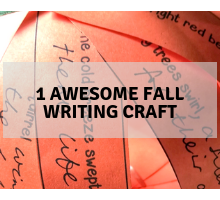
Did you love my Fall Writing Craft Activity as much as I did? Yes? Want to download the free writing prompts so you can use this craft activity straight away?
Just fill in your details below!

*I send emails with teaching tips, tricks, and free resources to my subscribers regularly. I value your privacy and you can learn more about how I handle your data in private policy. You can unsubscribe at any time.
Pop Quiz! Which of these best fits you?
If you answered “me, me!” to any of these 4 statements, then today’s blog post is dedicated to you. Here are 3 engaging classroom activities that: give your students a chance to debate; challenge students to stretch classroom knowledge to become real world knowledge; and help them link history and literature with their lives!
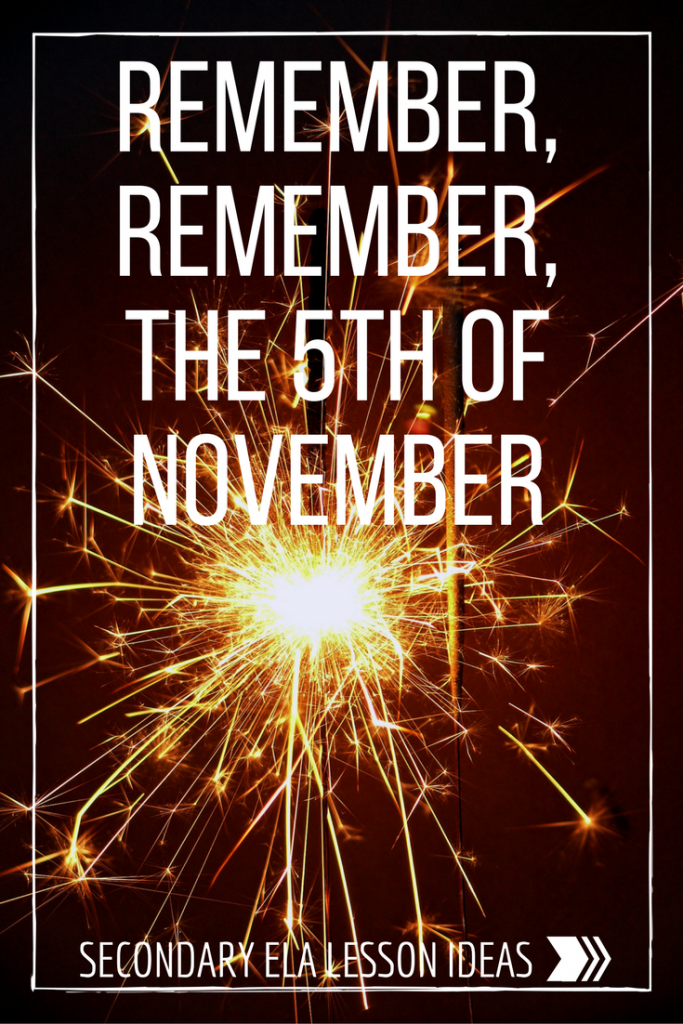
It’s easy to forget that Guy Fawkes wasn’t the instigator of the Gunpowder Plot, the man and the money behind it was Robert Catesby. A wealthy farmer and Catholic, Catesby persuaded many of his friends that James I was a weak king and could be easily removed from power.
Guy Fawkes, however, was also not the bumbling fool often portrayed in cartoons. He fought in the Spanish wars against the Dutch Republic and was an experienced soldier.
If you and your students are interested in finding out more about Guy Fawkes and the Gunpowder plot – then check out my Guy Fawkes Hero or Villain resource on TpT.
After you have researched Guy Fawkes in detail, use these debate prompts (a sneak peek from above resource) to spark some deep discussion in your classroom.
**Now a big disclaimer is needed here: V for Vendetta is rated a 15 here in the UK. The whole film is not suitable for classroom use.**
How do I use the film in my lessons to help discuss Guy Fawkes then?
Introduce the story: V for Vendetta (1998) is a graphic novel by Alan Moore. The story is set in a dystopian future where the United Kingdom is ruled over by a neo-facist regime. One night, 5th November, a freedom fighter attempts a revolution. He takes over the national media and makes a speech encouraging all citizens to join him the following year (on 5th November) again to start a rebellion.
Watch the clip:
https://www.youtube.com/watch?v=KKvvOFIHs4k
Read the speech and discuss persuasion:
I have attached a file with V’s revolutionary speech here. We discuss rhetoric and persuasion here and compare it to other political speeches. Then we discuss V’s use of 5th November as a sign of positive revolution.
I pose the questions:
In his dystopian novel, 1984, Orwell writes, “who controls the past, control the future” – we discuss this and the truth of it in our world today.

If your students love V as much as mine do then I often let them watch these two extra clips: The 5th of November Overture and *spoiler* the finale scene (note this contains swears) and will also spoil the film for them – so beware!!
One of the best things about nursery rhymes is that they are all pretty gruesome in nature. If they aren’t warding off the plague, they are accusing you of being a witch. The nursery rhyme written for the ‘celebration’ of failed Gunpowder Plot is just as brutal. We study it for ‘historical accuracy’ and rhetorical techniques and then we create our own Gunpowder Plot nursery rhyme. Sometimes we cast Guy Fawkes as the hero. Sometimes a hapless fool deserted by his comrades. Sometimes we write about James and the Lords in Parliament. Occasionally we imagine the horror if it had succeeded. If all else fails – we create a visualization of the original rhyme with lots of gory detail.
Remember, remember the fifth of November,
Gunpowder treason and plot.
We see no reason
Why gunpowder treason
Should ever be forgot!
Guy Fawkes, guy, t’was his intent
To blow up king and parliament.
Three score barrels were laid below
To prove old England’s overthrow.
By god’s mercy he was catch’d
With a darkened lantern and burning match.
So, holler boys, holler boys, Let the bells ring.
Holler boys, holler boys, God save the king.
And what shall we do with him?
Burn him!
Check out this interactive Guy Fawkes game on the BBC History website. Go to the Powder Plot Game here.
If you wanted to get your students debating; brief history and literature into the real world and challenge your students to really think, then this post was for you.

Sign up below to receive regular emails from me jammed packed with ELA teaching tips, tricks and free resources. Also access my free resource library!
The first few hours or days back at school are hectic. Timetables to give out, courses to enrol, books to organise. Annndd in my case – uniforms to check, planners to sign, and inevitability parents to call about incorrect shoes, hair, make-up, skirt length, nail varnish. We are busy: sorting out seating plans, handing out new books, sorting out target sheets and stickers, homework schedules, IEPs and TA resources.
Yup – back to school is hectic.
Added to this, most schools encourage a full-pelt return to hard learning. “What the learning question for your first lesson?”
Sometimes we just need a little bit of time.
For my new classes with older students – I like to gain 10 minutes or so with a few easy ‘get to know you’ activities.
Espresso Yourself – does that just that. Buys me 10 minutes to calm, followed by quality chat with the kids I have only just met. While I am muddling through the register and seating plan, they are telling me everything I need to know about them.

*I send emails with teaching tips, tricks, and free resources to my subscribers regularly. I value your privacy and you can learn more about how I handle your data in our private policy. You can unsubscribe at any time.

*I send emails with teaching tips, tricks, and free resources to my subscribers regularly. I value your privacy and you can learn more about how I handle your data in our private policy. You can unsubscribe at any time.

In my classroom, we spend a great deal of time analyzing language and techniques in literature. Often one we have read and discussed a text, my students are confident with their ideas. They have things to say about the language used, the structure, or the form. Yet they can struggle to put these ideas to paper.
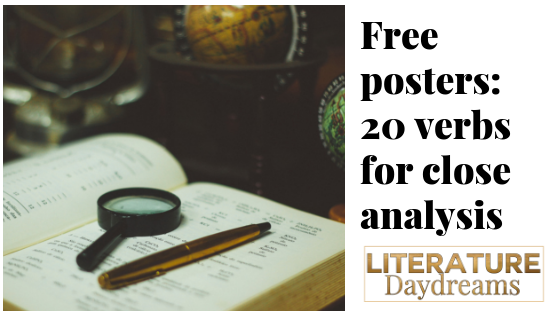
I avoid using sentence frames for literature essay writing whenever I can. They are hugely restrictive and it is boring to mark a whole set of essays that read the same.
One way to improve how close analysis is written up is to focus on the verbs of analysis. I have these 20 posters up in my classroom and I refer to them frequently. I also have them printed in a small task card size so students can have them on their desks.
These verbs not only help students focus their thinking and ideas, but also allow them to bring some variety to their analytical writing. We are avoiding the overuse of ‘this suggests’ and ‘this implies’!
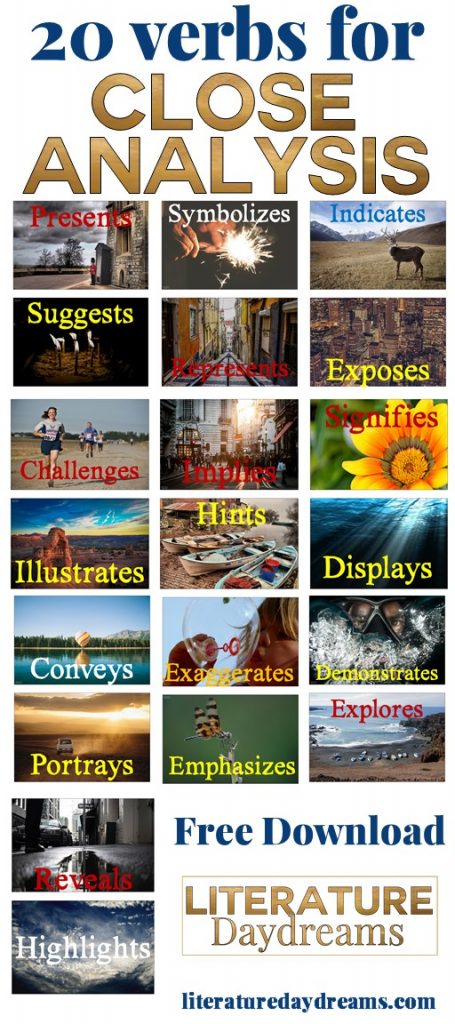
This list of 20 verbs is free for you to download here!
While you are here – consider signing up for my weekly newsletter. Every Sunday I send out two teaching ideas: one classroom activity, and one literature activity. You can sign up using the form below!

Sign up below to receive regular emails from me jammed packed with ELA teaching tips, tricks and free resources. Also access my free resource library!

Hey teacher-friends!
This post is a sweet morsel from me to bring you a hamper full of ideas for Back To School. Sound good? Well, head on over to my IG account to find them there. Throughout the month of August, I am sharing my favorite classroom ideas igniting a spark in the classroom. Even better – I am sharing freebies and gifts as well, exclusively on IG. So let’s get connected!
That’s all for today but check back soon for my new series of blogposts on teaching Macbeth!

*I send emails with teaching tips, tricks, and free resources to my subscribers regularly. I value your privacy and you can learn more about how I handle your data in our private policy. You can unsubscribe at any time.